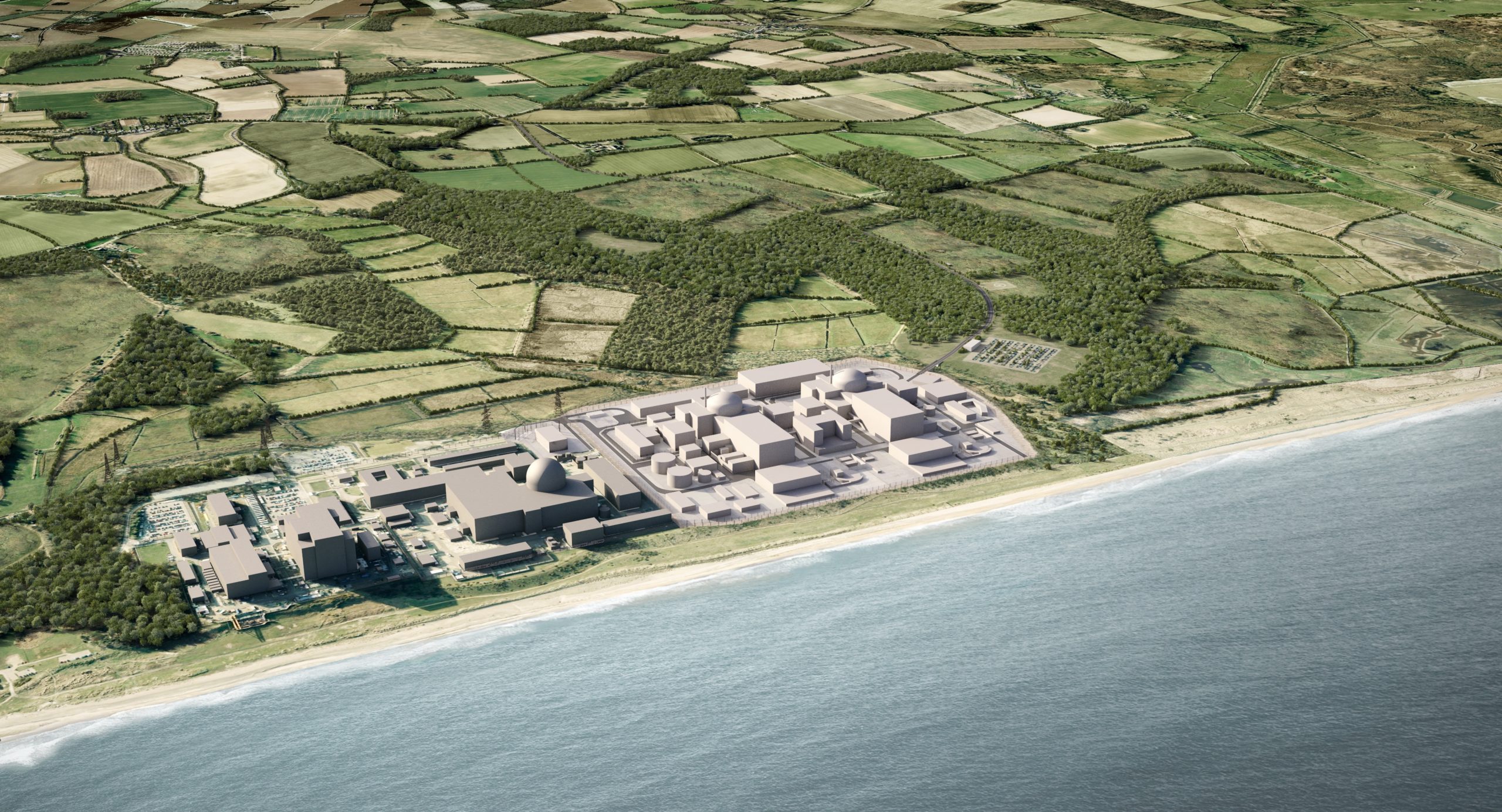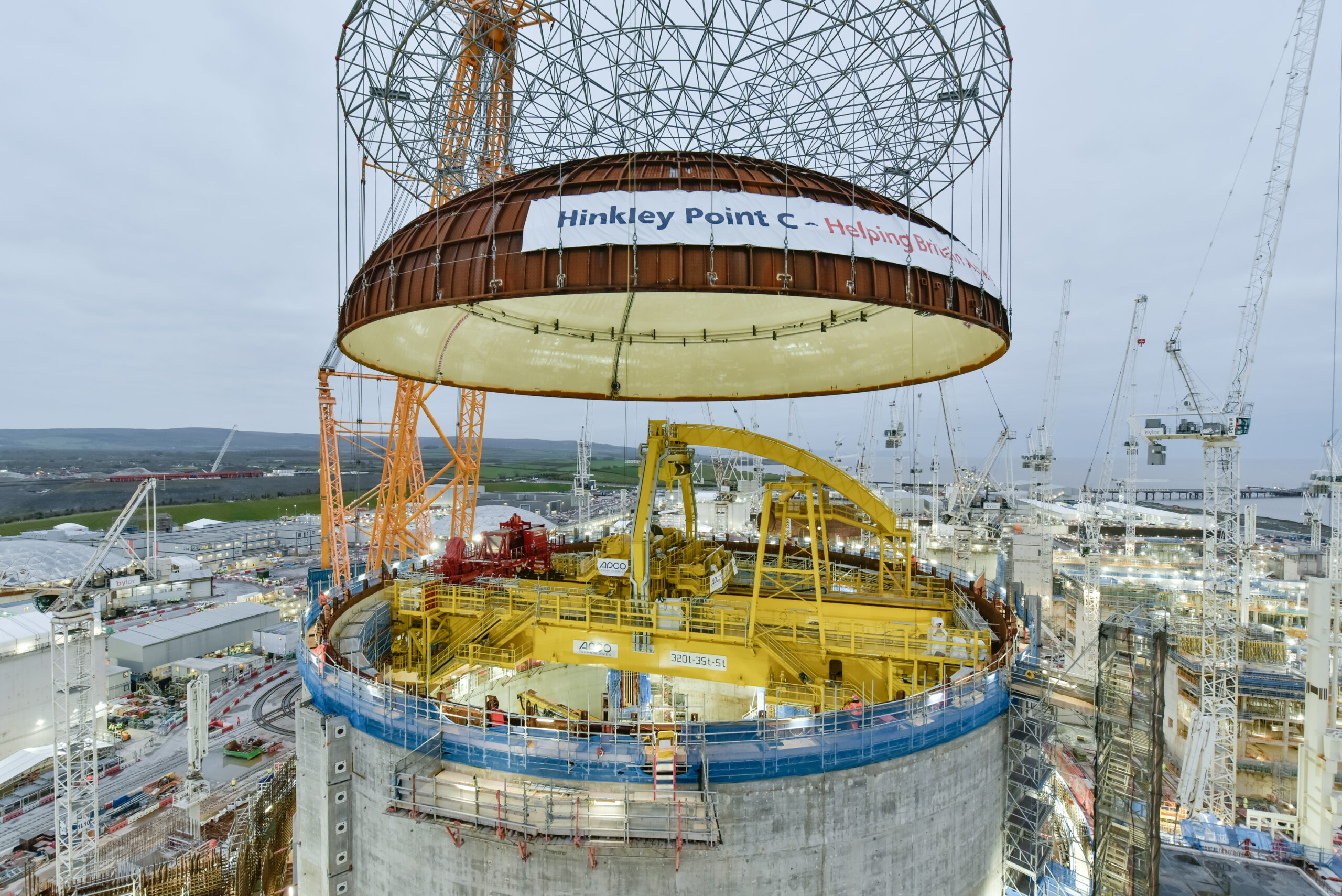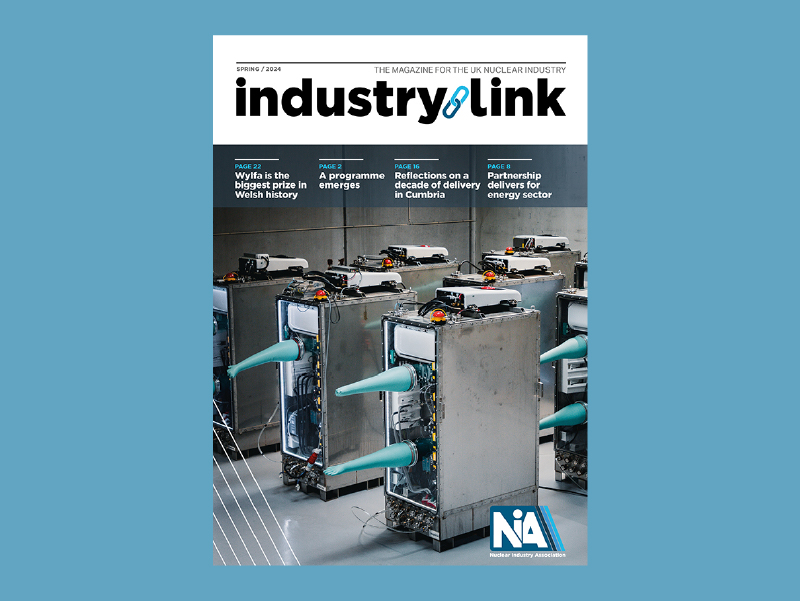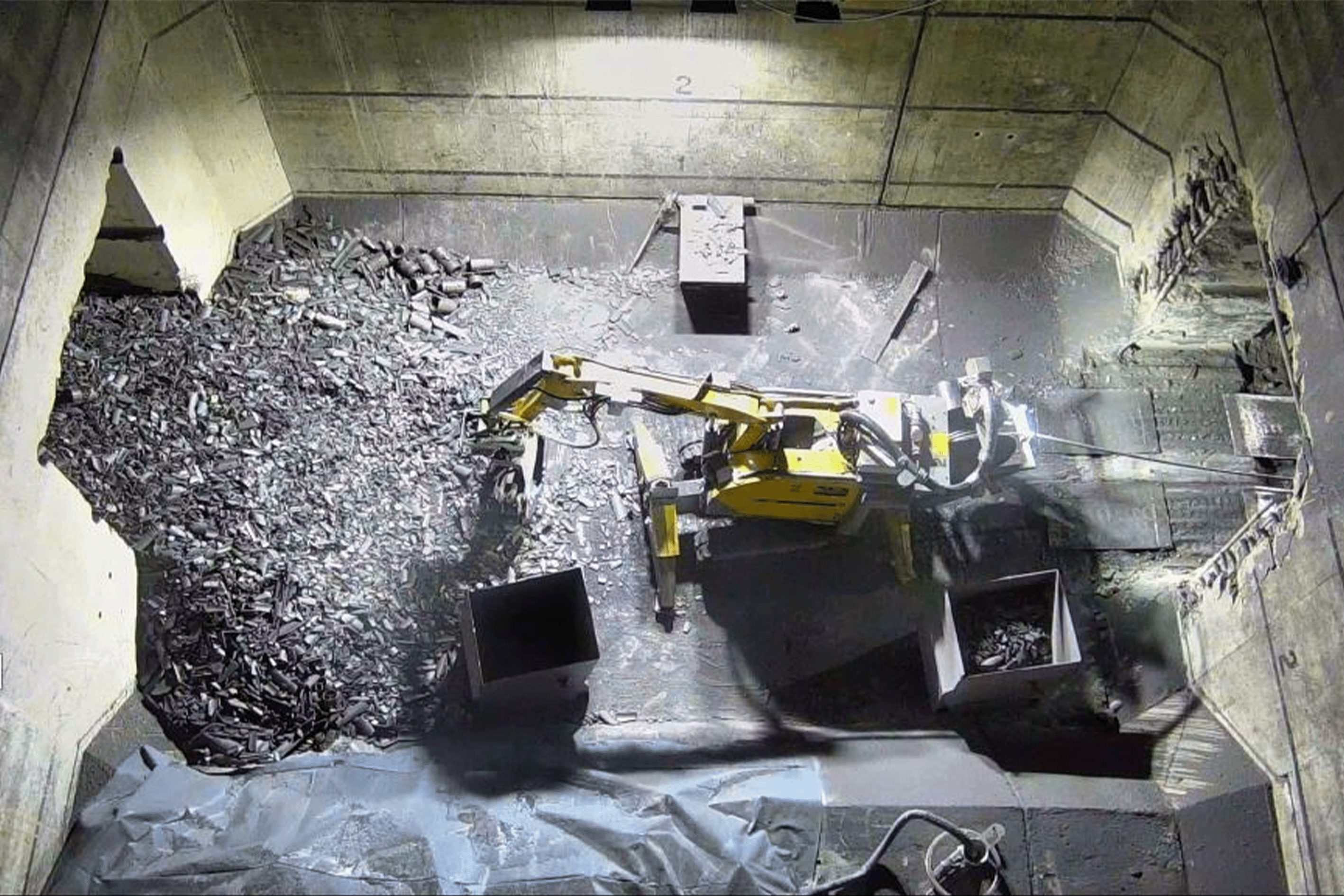The Nuclear Industry Association (NIA) welcomes the opportunity to respond the independent Review of Net Zero commissioned by the Department for Business, Energy & Industry Strategy (BEIS).
The NIA is the trade association and representative body for the civil nuclear industry in the UK. We represent around 250 companies operating across all aspects of the nuclear fuel cycle, including the current and prospective operators of nuclear power stations, international designers, and vendors of nuclear power stations, and those engaged in decommissioning, waste management and nuclear liabilities management. Members also include nuclear equipment suppliers, engineering and construction firms, nuclear research organisations, and legal, financial and consultancy companies.
Due to the diversity of our membership, our views in this submission will cover high-level, industry-wide matters. Our members may choose to make their own detailed submissions.
What challenges and obstacles have you identified to decarbonisation?
The single biggest obstacle to decarbonisation is the sheer volume of low-carbon infrastructure that needs to be built – not just in the run up to Net Zero by 2050 but beyond that in the future. This is not a challenge that is unique to the nuclear sector.
The Climate Change Committee (CCC) has estimated that the UK needs to double its electricity supply by 2050, leaving a significant gap which needs to be wholly filled by clean, reliable power. This means more than quadrupling the UK’s current clean generating capacity to get us to Net Zero. The CCC has also stated that 38% of electricity in 2050 should come from ‘firm’ sources, of which nuclear is the only proven low-carbon option at scale. These calculations assume an uptake in energy efficiency and reduced energy use by both individual consumers and industry.
Nuclear is already essential to the UK’s decarbonised electricity mix, currently supplying around 15% of electricity demand and nearly a half of our low-carbon electricity. The current fleet has saved more than 1bn tonnes of carbon emissions over its lifetime. During the challenging circumstances caused by the events of the Covid-19 pandemic and recent energy crisis, nuclear has proven its consistency in keeping the lights on even during adverse events and has showcased its ability to be flexible when necessary.
However, all but one of the five current nuclear power stations will cease operating by 2028. In the last year alone, we have seen three stations ceasing generation; Hinkley Point B, which was the UK’s most productive nuclear power station, stopped operations this summer, Hunterston B closed in January 2022 after 46 years of operation, and Dungeness, which closed in 2021. We will lose more than 5.2GW of clean capacity from the grid in total.
Planned closures of nuclear reactors were reflected in the most recent DUKES (Digest of UK Energy Statistics) from BEIS, which showed nuclear generation was down to 16.1%. While it is expected to rebound slightly next year, in the medium-term, we are losing capacity as old stations retire, and losing it fast.
Nuclear generation will drop away swiftly and will stay low unless we invest urgently in new capacity. Of the UK’s nine generating reactors, four more will retire by March 2024 at Hartlepool and Heysham 1. These stations have been the most productive low-carbon assets in British history. They were built decades ago yet are still some of the UK’s leading sources of clean power. In short, these reactors provide clean, always-on power for which we simply have no replacement.
In the long-term, building a new fleet of nuclear reactors will help mitigate similar events such as the recent energy crisis, making the UK less reliant on imported energy from foreign sources and keeping the lights on during periods when the wind doesn’t blow, and the sun doesn’t shine.
Our own analysis found that if the UK committed to building two large scale nuclear stations at Wylfa and Sizewell, along with a fleet of Small Modular Reactors (SMRs), it could replace more than 10bn cubic metres of gas imports.
In our Forty by 50 report – published in 2020 – we stated our belief that the nuclear sector could contribute 40GW of power by 2050, which includes 240TWh of electricity, 75TWh of hydrogen and 100TWh of district heat. Meeting this target would, on average, avoid 186.75m tonnes of CO2 a year (equivalent to the annual emissions of 48 coalfired power plants), create an additional
300,000 jobs, and contribute £33bn annual GVA – greater than the entire electricity and gas industry today.
Throughout this response we will detail more on specific challenges and obstacles that the nuclear industry is facing as it works to decarbonise the UK.
What opportunities are there for new/amended measures to stimulate or facilitate the transition to net zero in a way that is pro-growth and/or pro-business?
What more could government do to support businesses, consumers and other actors to decarbonise?
The first priority for the Government should be the stabilisation of the gas market to ensure that consumers can pay their bills and businesses and/or industry can remain competitive.
The NIA would like to note its disagreement with a general windfall tax on all energy companies, which would include low-carbon technologies like nuclear and renewables. While we know this was ruled out by Truss’ administration, concern remains in the sector with a new Prime Minister appointed.
The recently proposed revenue cap would also have a significant effect on nuclear power, diverting investment away from low-carbon technologies at a time where the need for green, firm power is needed most.
Beyond the obvious immediate challenges, we also hope the UK’s upcoming Taxonomy will help provide a level playing field for investment for low carbon technologies.
The NIA welcomes the Government’s intention to consult on the criteria for nuclear power to be included in the UK Taxonomy, and the formation of the Energy Working Group to look at the role of nuclear power. We believe it is clear that nuclear technologies can make a substantial contribution to the Taxonomy’s objective of climate change mitigation, and these actions are a move in the right direction.
We also note that significant research on nuclear’s characteristics has already been undertaken by the EU in the drafting of its own Taxonomy. The EU commissioned an exhaustive Joint Research Centre (JRC) report which found there was no scientific basis to treat nuclear differently from other sustainable technologies.
It has since been announced that the EU will include nuclear in its Taxonomy on a series of conditions, such as plans for the disposal of nuclear waste and the use of accident-tolerant fuel. The UK must avoid the mistakes of the EU, which wasted years, money, and resource in a political effort to deny nuclear a sustainable classification, despite the science.
As a world-leader in climate change mitigation and environmental finance, the UK can make decisions that have international ramifications. If nuclear were to be excluded from the UK Taxonomy, it would make it incredibly challenging to mobilise the required investment and make our path to Net Zero by 2050 far more uncertain.
In 2021, the Treasury published the Green Financing Framework which set out how the UK Government will finance expenditures related to tackling climate change through the issuance of green gilts and Green Savings Bonds via NS&I. The Framework is intended to be aligned to the upcoming UK Taxonomy.
Nuclear power was specifically excluded from the Framework, with the Treasury stating that in consideration of the “many sustainable investors [that] have exclusionary criteria in place around nuclear energy, the UK Government will not finance any nuclear energy-related expenditures under the Framework”.
This is in direct contrast to the position taken by several investment banks, including the Bank of Montreal, which supported the successful issuance of CAD$500m in green bonds for the refurbishment of nuclear reactors in Ontario. The issuance was six-times oversubscribed.
In consequent answers to numerous Parliamentary Questions, former Economic Secretary John Glen said that the Framework followed current international market standards for sovereign green bonds and does not wholly represent what the Government considers to be ‘green’. Government has reiterated its stance that nuclear power has an important part to play in Net Zero by 2050 and financing for the technology will be considered as part of its development of the UK Taxonomy.
The Framework will be reviewed on a regular basis, so there may be a time when nuclear is included in the future. While the Framework will not prevent private investors from investing in nuclear, its exclusion has sent a signal to the finance community that the Government does not see nuclear power as ‘green’ enough.
This must be rectified through nuclear’s inclusion in the UK Taxonomy if Government want to show they are confident in nuclear power’s role in getting to net zero. The positive recognition of nuclear in the Taxonomy would attract investors to nuclear.
To stimulate investment in nuclear, the Government should therefore:
• Pursue a level playing field for all low-carbon technologies in the drafting of its UK Taxonomy
• Urgently review the exclusion of nuclear from the Green Financing Framework
The key to securing investment in reliable and affordable low-carbon energy ultimately depends on clear Government direction and publicly communicated confidence in a technology and/or sector to deliver.
Earlier this year, French President Emmanuel Macron announced that France would build fourteen new reactors by 2050 as part of its bid to hit Net Zero. He also committed €1bn to France’s SMR project. Together, the programme will deliver 25GW of new nuclear capacity. In a clear commitment to nuclear, he said: “What our country needs […] is the rebirth of France’s nuclear industry.”
South Korea has openly admitted that its turnaround on nuclear power – having previously wanted to reduce its nuclear output from 25% to 10% in favour of importing energy from China and Russia – was heavily influenced by France’s confidence in nuclear power through its new nuclear construction programme and target.
The UK Government should aim to replicate France’s strong communication to the world that the UK is also open and ready for investment into our sector through a strong commitment to multiple projects, such as Sizewell C, Wylfa, Rolls-Royce SMR, and beyond. Taking a one-by-one approach is not enough to provide the security the UK needs.
This message can then be underpinned by the recommendations on funding regulation that we have outlined in this response to enable investment.
Where and in what areas of policy focus could net zero be achieved in a more economically efficient manner?
How should we balance our priorities to maintaining energy security with our commitments to delivering net zero by 2050?
Nuclear can uniquely deliver cost-efficient energy security. Nuclear power stations are baseload electricity suppliers, famously providing low-carbon energy to the UK ‘when the wind doesn’t blow and the sun doesn’t shine.’
Following the invasion of Ukraine, the UK nuclear sector, which is not heavily reliant on Russia for its operations, has made plans to bolster its nuclear fuel capabilities at its Capenhurst and Springfields sites to become a bigger hub for the Western nuclear sector for existing fuels and new fuel, such as HALEU, for AMRs.
Other nuclear countries have been increasingly interested in the UK nuclear market in this regard. The sector worked closely with the APPG on Nuclear Energy on its Resisting Russia’s Energy War: UK Nuclear Investment for Allied Energy Security paper released this year.
In terms of financing, the successful progression of the Nuclear Energy (Financing) Act through Parliament was essential to establish the RAB model, which could enable the low-cost financing of projects such as Sizewell C, and beyond. RAB financing would save consumers around £30bn on bills over the lifetime of each project, around £10 per year off the typical bill, according to official BEIS estimates. This is compared to the Contract for Difference (CfD) mechanism used for Hinkley Point C.
A large-scale nuclear project financed using RAB would add a small levy to bills of no more than a few pounds during the early phase of construction and less than £1 per month over the course of a project.
This is compared to the equivalent of £125 per year added to household bills as a result of balancing costs over the last 12 months (calculated summer 2022). Having more firm power on the grid, like nuclear, would reduce balancing costs and avoid these excessive additional costs in a future system.
The income generated from this small levy to bills during construction will allow project developers to finance the project at cheaper rates, which would substantially cut the ultimate cost to consumers of the electricity it produces.
While recent progress is incredibly welcome, timing remains critical, and Government must remain focused if Sizewell C is to reach FID by the end of 2022 and contribute to the Government’s ambition of eight new nuclear reactors by 2030. Concluding this legislation will also allow for more resource to be allocated within Government to open negotiations for the use of the RAB model for new nuclear projects like at Wylfa.
For next generation reactors, costs will be reduced due to their modularity and ability to be built on construction lines in factories. Their designs have simpler, shorter construction programmes, and combined with opportunities for co-location with other facilities, will be lower in both cost and risk.
As a result, SMR and AMR developers are looking at both the RAB and CfD to finance their projects. The Government should continue to work with industry on developing its approach to financing advanced reactors, including providing clarity on the steps developers need to take to qualify for the commence CfD negotiations with Government. This action should be done alongside the work on siting and GDA requirements for the deployment of SMRs, which we will detail later in this response.
What export opportunities does the transition to net zero present for the UK economy or UK businesses?
Looking at the international market in your sector, what green opportunities seem to be nascent or growing?
The Government’s own modelling for the Energy White Paper and Net Zero Strategy states that around 30GW of installed nuclear capacity will be required to decarbonise the UK’s electricity by 2050, meaning the potential for exporting our nuclear power expertise and technology is substantial. The Government has recognised this and has invested in several areas across the nuclear programme.
It is working with the sector in the development of the Rolls Royce SMR. The first of their SMRs is set to be connected to the grid by 2031, with two reactors coming online each year thereafter. Rolls Royce SMR plan on a fleet of 16 reactors across the UK, equating to 7.5GW of installed electrical capacity.
SMRs are flexible in their output. They can provide baseload electricity when variable technologies aren’t providing high enough output, or, in periods of high renewable generation, can load follow by diverting to hydrogen or producing synthetic fuel for aviation and shipping.
The development of Advanced Modular Reactors (AMRs) is also progressing, with the Government having recently confirmed its preference to pursue High Temperature Gas Reactors as the technology of choice for its AMR programme. It committed £385m to this fund in its 2020 Energy White Paper, which may include the development of a demonstrator AMR for hydrogen
production. Demonstrators are targeted to be deployed in the early 2030s.
Beyond AMRs, the UK is a key player in the burgeoning global nuclear fusion market as the home of the Joint European Torus (JET) at the Culham Centre for Fusion Energy. In the last year, the Government’s Spherical Tokamak Energy Programme (STEP) has shortlisted five sites for a UK commercial fusion reactor, making the technology more of a reality.
We are encouraged by recent Government commitments to incentivise nuclear power in the UK and this vocal confidence in the sector is integral to attracting investment into ongoing projects – from Sizewell C to STEP. However, the pace at which policies are being progressed is not enough to meet not just the scale of ambition but the necessary replacement of low-carbon electricity as our fleet of AGRs go offline over the next decade.
These projects evidently need significant investment, especially those still in the R&D stages, and the UK will miss out on funding to other competitors across the globe if the Government’s vision for nuclear in a Net Zero world does not match the ease at which investors and developers can navigate Government policy and regulation in a timely manner.
Unpinning all of these programmes is skills and expertise, which is arguably the most exportable product that the UK has. With its rich nuclear history – the UK built the first commercial nuclear power plant in the world – we have decades of learnings that other countries are interested in. This is particularly true for newer nuclear countries, such as those in the Middle East and Eastern
Europe.
However, without consistent political support, which has wavered significantly over the last two decades, the UK is permanently losing its talent to competitors, having failed to balance investment in innovation and large infrastructure projects. We hope that the establishment of GBN will reinforce the commitment of the Government to the UK nuclear sector and work to combat uncertainty in our workforce and guarantee them future jobs here in the UK.
For clean power industry: what barriers to entry have you found in deploying new plant and technologies?
Given the Government’s target of having eight new reactors in development by 2030, the announced intention to establish GBN as a vehicle to delivery new nuclear in the UK was welcomed by industry. The NIA believes it will play a pivotal role in providing the key milestones and indications of progress in achieving these ambitions.
Key to this were the first 100 days of GBN, leading to a preliminary report which was delivered to the new Prime Minister in September 2022. We believe that workstreams have been established through consultation with industry that will have their own targets, although these have not been made public yet as they are still in development. The NIA will remain in close communication with GBN and BEIS throughout this process.
Due to this, in this submission we will therefore only be touching on what the NIA believes the priorities for this vehicle should be and wait with anticipation on the official details of the GBN in due course. These priorities are:
Finance
Trust and confidence in nuclear power is lacking throughout the finance community, despite growing interest from a number of key stakeholders. Progress on establishing the RAB model as a mechanism to finance new nuclear has certainly added to this confidence, both nationally and internationally.
As we go greener and the world moves towards Net Zero, the finance sector is looking to Governments for assurance on which low-carbon technologies are a safe investment for them. Therefore, the inclusion of nuclear power in the UK Taxonomy, and Green Financing Framework, would be a significant indication that nuclear power was a good investment, as without investment, these projects cannot be built, and the UK will not hit its decarbonisation goals.
GBN should also consult with financial institutions on how to enable the effective sale of green bonds including nuclear, which took place last year in Canada, so that the Government can announce that the next issue of green bond will include nuclear within that 100-day timeframe.
It is also important to note that projects financed under green bonds can be done so at a slightly lower yield than standard debt. While this may not seem significant, for nuclear projects a 1% reduction in the weighted average cost of capital (WACC) can equate to £8-9/MWh off the strike price.
Accelerating delivery of projects
Working on the projected speed and delivery of projects will require extensive consultation with companies looking to build both GW-scale and Advanced Nuclear Technologies (ANTs) – SMRs and AMRs – in the UK within the next decade. In these conversations, GBN needs to identify how delivery through to full operation could be accelerated.
It should assemble a list of comparator project delivery models and key individuals who understand what worked, and why, to each draw on how delivery timescales of nuclear can be improved. Comparator projects could include high speed rail, submarines, and aircraft carriers, to name a few, and their lead personnel should be sought out.
Permitting and Regulation
Regulation and safety are at the heart of the nuclear sector. However, the current system cannot work efficiently or quickly enough to deliver on Government targets. Therefore, without compromising on current standards, the permitting regime should look for ways to accelerate the timeframes of decisions need to approve nuclear projects.
This should be an early priority for GBN to commission, and is particularly important to the deployment of ANTs, as previously discussed in this submission.
As part of this process, it is of critical importance to identify all the pre-Final Investment Decision (FID) steps and assess how many of them could be run in parallel rather than in series and the
capacity requirements in agencies and bodies to facilitate that greater urgency of approach. We understand resource will be a significant issue for the Government and therefore should be rectified as soon as possible.
In line with current work of global harmonisation of regulation practices, the UK should incorporate the work that has been done by the ONR with equivalent regulators in Canada and the US and draw on the progress of initiatives being led by the IAEA to avoid duplication of regulatory processes for a particular reactor design. This is a further area where the UK has a chance to take the lead internationally.
This work should also look at how the benefits of nuclear power can be shared with local communities and sites – as was previously done by the Government during the 2008 siting process – and in line with approaches under discussion for renewable developments.
Earlier this year, the NIA, Energy UK, Solar Energy UK and Renewable UK wrote to the Defra Secretary of State asking that a Net Zero Duty be placed on environmental regulators in the UK to ensure that their procedures, decision-making and advice will ensure the Government’s legally binding target of Net Zero by 2050.
The work on regulation by GBN should buy-in to this ask to ensure that decisions on new nuclear power are considered under the Net Zero target, as well as building on existing cross-sector collaboration amongst low-carbon technologies.
Siting
GBN should undertake a rapid high-spot study on potential GW-scale and SMR sites in England and Wales, involving those who had been part of the previous siting process. We know this can be done, following the successful process run by the UKAEA in their bid to find a home for its Spherical Tokamak for Energy Production (STEP).
The need for more sites should guide that quick review and subsequently help identify sites suitable for large- or small-scale development, or potentially both co-developed alongside each other.
We understand that a new NPS for nuclear electricity generation infrastructure deployable after 2025 will be developed to reflect the changing technology landscape for nuclear and that the Government envisages consulting on a siting approach for new nuclear developments.
This new NPS for nuclear power should be published to include ANTs and beyond. The NPS should tackle a new siting process for SMRs – either through authorising more nuclear licensed sites or approval of unused brownfield sites to hold SMRs without special categorisation.
Furthermore, the Government should look to release existing nuclear sites as a matter of urgency, such as those under the Nuclear Decommissioning Authority’s (NDA) stewardship, for the development of ANTs. This can be done in two ways: through negotiations with a current nuclear site owner or with the NDA to obtain an appropriate site for deployment.
In relation to ownership of the land around the Wylfa A site, which was designated for new nuclear in the 2008 NPS, the Committee should look to question owners Hitachi on their requirements and plans to sell the land to a new developer, to enable progress at the site.
Supply chain and skills
There has been a lot of work previously undertaken in this area – both in mapping current skills capacity and demand, and in identifying areas throughout the fuel cycle where the supply chain is able to make a meaningful contribution. This includes the NIA’s 2012 Capability Report.
It is important that this exercise does not exclude the significant fuel capability the UK currently has, which is an important aspect of energy security. Utilising readily available information will
assist in GBN producing a rapid assessment of where capability and capacity shortcomings can be addressed, and with intervention, can maximise domestic content on the accelerated scale of
deployment that is being sought. Repurposing of the work that is co-ordinated by various cross-sector bodies, and actions undertaken by the previous Nuclear Sector Deal Project Management Office (PMO), to support GBN will provide a coherence and consistency currently often lacking.
The export potential of UK technology, and UK supply chain capability, should be an integral part of GBN’s remit, as it was when the Nuclear Sector Deal was published in 2018. Exports are a key driver for innovation in our sector and signal to investors major opportunities in the UK economy.
Governance and Industry engagement
There are a number of cross-industry groupings and initiatives in place – all of which should be tasked with providing support to, and a route of interaction between GBN and industry, and as appropriate with government more widely.
To execute its work effectively in its first 100 days, GBN should look to at these initiatives to make sure that its work is not duplicated, and time is wasted. For example, the Nuclear Sector Deal has a PMO in place, which should also be repurposed to help drive industry co-ordination of activity in support of GBN’s mission. There are other groups, including on skills for example, where similar rationalisation could provide a greater degree of clarity and coherence across the sector.
How many green jobs do you estimate will be created in your sector by 2030?
Today the nuclear industry supports over 60,000 jobs directly and around 160,000 indirectly across areas such as manufacturing, construction, and the broader supply chain. In the NIA’s Forty by 50 report, we calculated that if the UK committed to a >30GW nuclear programme by 2050, that the workforce would potentially grow to 300,000 highly skilled, highly paid, green jobs.
A 2030 figure can be calculated once the Government announces its plans for GBN and a forward programme for the next decade. We hope to hear an announcement by the end of year, despite the change in the administration











